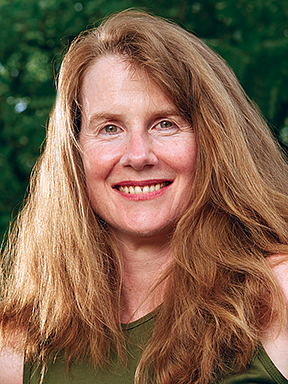University of Oregon law professor Mary Christina Wood established a legal framework known as "atmospheric trust litigation", which is being used as the basis of Held Vs. Montana, a case in which a group of Montana youth look to hold their state accountable for the damages that have been allowed through greenhouse gas emissions.

This article first appeared in Around the O on August 21st, 2023.
Through the nonprofit Our Children’s Trust, 16 Montana youths ages 5-22 sued the state for violating their constitutional rights to a clean environment. The plaintiffs in Held v. Montana made history this June when their lawsuit became the first such case to make it to trial.
They reached another milestone Aug. 14, when Judge Kathy Seeley found their constitutional rights have been violated and rescinded a Montana law that prohibits considering greenhouse gases when evaluating permit requests for energy projects.

Philip H. Knight Professor of Law Mary Christina Wood of the UO School of Law is not involved in the youth climate lawsuit that’s making headlines. However, her research established the legal framework upon which the case, and others like it, are built. That framework is broadly known as atmospheric trust litigation.
“It’s a landmark victory for the youth plaintiffs,” Wood said. “This ruling establishes a pivotal precedent.”
The judge also affirmed that the state constitution’s guarantee of “a clean and healthful environment” includes climate. By pursuing atmospheric trust litigation, a phrase coined by Wood, young activists around the world are engaged in lawsuits like this one — and still fighting for their day in court.
The ruling was good news for all of these youth, Wood said, because it established a new legal foothold and a viable model for courts to move forward.
“All the citizens of Montana can take this opinion and apply it to relevant legal forums,” Wood said. “It defines the sidewalls of permissible activity. It’s a declaration of law, but it’s also a declaration of how to approach a climate trial.
“The court put in the effort and created a methodology for sifting through climate science. The volume of evidence compiled by the judge and the length of her opinion demonstrate extensive judicial work. Other judges will take notice.”
And all that work happened quickly. The seven-day trial ended June 20 and the ruling was made less than two months later. That set another important precedent. Because of the exigencies of climate chaos, judges must get comfortable rendering decisions quickly, said Wood, who is part of the UO's Environment Initiative.
She emphasized the reverberations will go far beyond Montana.
“This is going to have an impact on other cases,” she said. “There’s a similar trial scheduled in Hawaii next summer. You can bet that court (and courts around the world) will look at this opinion very closely. We’re dealing with a common planetary resource. It’s not cohesive yet, but an international body of law is emerging around climate change.”
Wood’s foundational research planted the seed for this burgeoning legal sphere.
As momentum around atmospheric trust litigation builds, Wood hopes people will embrace their right to a stable climate system as fervently as their right to vote or free speech. None of our constitutional rights, she noted, offer much value on an uninhabitable planet.
—By Ed Dorsch, University Communications
—Top photo: The Montana state flag and a Lady Justice statue


Showing 1 reaction